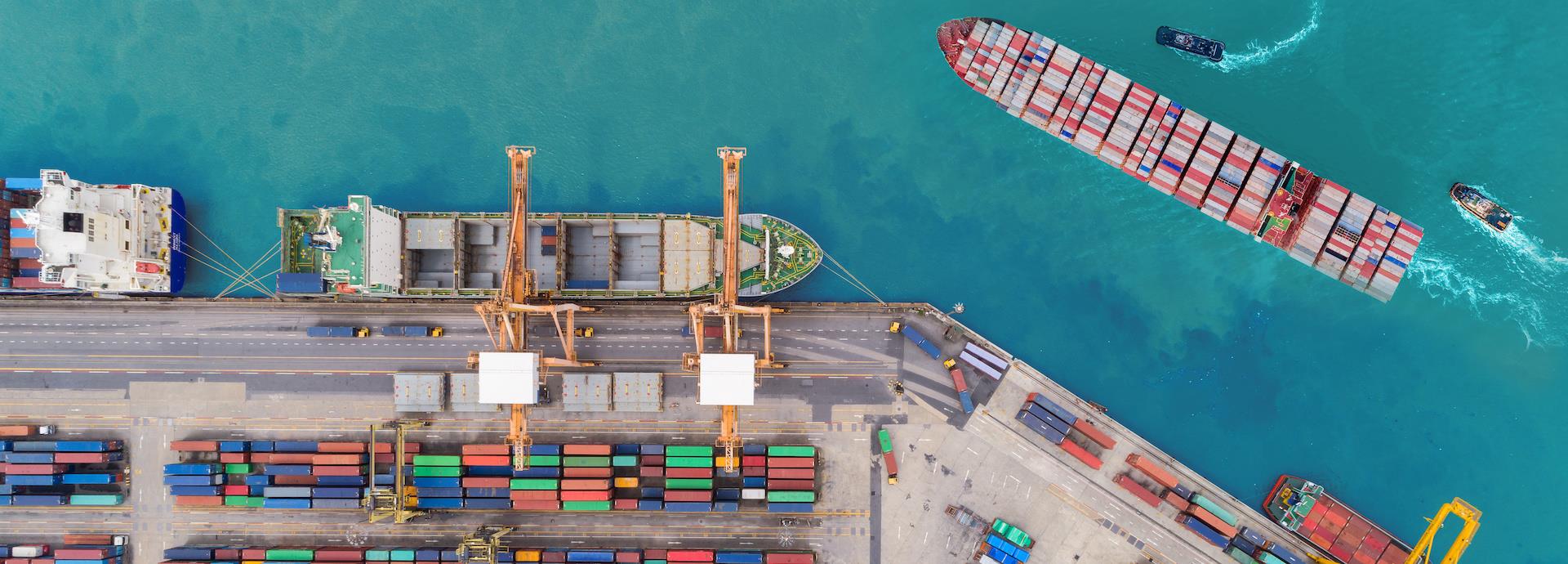

The Covid-19 pandemic has forced a rethinking of maritime supply chains – speeding up trends that were already on the horizon, like increased digitalisation, and taking another look at proposals that could increase resiliency, like multi-sourcing.
The world is waking up to how brittle the hyper-efficient supply chains developed over the past few decades are when faced with a disruption like the Covid-19 pandemic.
In the future, says Andrei Voinigescu, General Manager, Business Intelligence at Wärtsilä, the container shipping giants will need to become more flexible in redeploying vessels to different routes in response to more volatility in the demand for seaborne trade.
And that has broader implications for the industry as a whole.
“That may well mean a break from the current trend to invest in ever-larger vessels designed to capture economies of scale for the traditional east-west trades. It could bring about a renaissance of investment in smaller regional feeder ships that are easier to redeploy if trade patterns shift from long-haul routes to more short sea intra-regional trade,” Voinigescu explains.
For Robin Jaacks, Chief Commercial Officer of Ocean Insights, that is a big ‘if.’
“We might see some efforts to produce and trade more locally. At the same time, our research suggests that trade flows and capacities on the major trade lanes are recovering. In the foreseeable future, laptops still won't be assembled in western Europe,” Jaacks says.
However, Michael Bell, professor of Ports and Maritime Logistics at the University of Sydney, believes that post-Covid growth will lie in short-sea and inter-regional shipping.
“The pandemic is highlighting the vulnerability of global supply chains. Automation and digitalisation are making production more mobile and less dependent on large pools of cheap labour,” Bell says. “We will see the splintering of monolithic global supply chains into multiple shorter supply chains, more 'near shoring,’ and multi-sourcing.”
The future is digital
The experts agree that overall, the pandemic has forced a fundamental rethink of the way we work. It has shown just how many things can be done remotely and through digital channels. They are unanimous in their assessment that technology will be key to building stronger, smarter supply chains and ensuring a lasting recovery from the pandemic.
“New impetus has been given to the electronic bill of lading. Ship classification societies can conduct remote safety inspections. Many of these changes, born of need, improve efficiency and reduce costs, and so are here to stay,” Bell says.
Jaacks says that the transition to a new model for supply chains to make them more resilient will be underpinned by a rapid digitisation of the paperwork processes that accompany global trade.
“The relationship between buyers and suppliers remains predominantly paper-based. Digitising the buyer-supplier relationship is a fundamental element in building sturdy supply chains and will make identifying and recruiting new suppliers far less time-consuming,” Jaacks says. “The change will be capital intensive, but it will create a seamless technical experience with suppliers, carriers, and ports alike.”
“The current crisis is an opportunity to reset a system that has relied on out-dated processes,” he adds. “Creating smart and nimble supply chains is the key to building a global trade and investment network that’s capable of weathering future storms.
Business-critical innovation
Investment in digital technologies that increase the utilisation of assets and ultimately lead to a reduction in operational costs will also be essential in keeping some ship owners solvent. With expensive assets sitting idle due to low demand, Voinigescu sees a lot of potential for digital start-ups focusing on logistics.
“We might see the rise of new business models here. An Uber of cargo, for example – a company that creates a platform and more optimised marketplace of exchange between cargo owners that need their cargo moved from point A to point B and the ship owners who want to deploy their vessels on the most lucrative routes,” Voinigescu suggests.
Transparency issues around vessel operations are already being solved with tools such as Wärtsilä’s Fleet Operating Solution (FOS), which can enable better visibility on how vessels are being deployed and create a baseline of utilisation, fuel usage and safety against which the owner can measure improvements. According to Voinigescu, for owners managing large fleets, solutions like FOS offer ways to systematically and rigorously identify which of their vessels and crews are exemplary and which are dragging down profitability – an invaluable asset when trying to bounce back from the economic strains caused by the pandemic.
Bell also sees automation as important for reducing costs and increasing efficiency.
“By eliminating crew and life support systems on ships through increased automation, the fixed cost of a ship is reduced, which in turn reduces the optimal size of a ship. Smaller ships will offer new roles for smaller ports and coastal communities and could lead to a revival of coastal shipping,” Bell says. “It will also offer supply chains more channels, reducing their reliance on a limited number of large ports, and thereby improve resilience. It will make import and export more like a flow and less about large batches of containers, thereby reducing the inventory held in container yards.”
Jaacks agrees that for companies to survive in the future, they will have to be willing to adapt and embrace the latest developments.
Given the velocity of change, companies either face the challenges ahead or they will get disrupted by emerging players willing to invest in digital capabilities.” But, Jaacks adds, “Although investment in technology is critical, I think that it can never be a substitute for good leadership. Many of the most impressive responses that I have seen were driven by inspiring leaders (who invested in technology early on).”
Did you like this? Subscribe to Insights updates!
Once every six weeks, you will get the top picks – the latest and the greatest pieces – from this Insights channel by email.